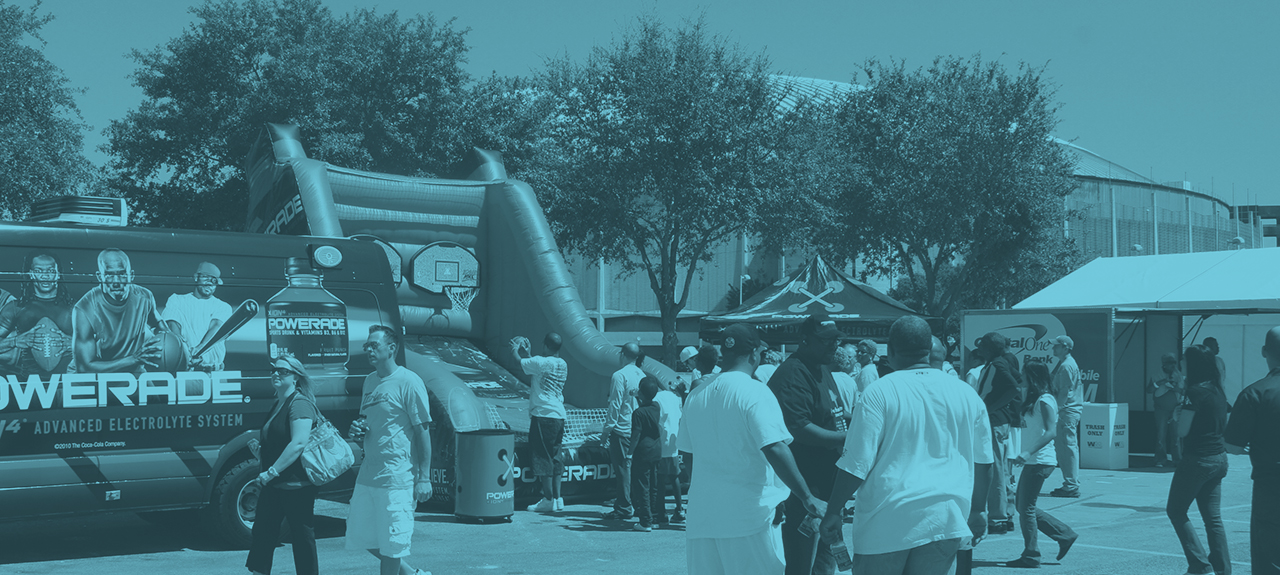Whether it is a music festival, a racing event or a World Series, a large-scale event will often draw in thousands of excited attendees. Naturally, brands also want to jump in to the action. Crowds = exposure to potential buyers! Crowds = profit! Right???
In reality, it’s not so simple. There are plenty of challenges involved in setting up camp at a 100,000-person event. This list isn’t to discourage, but to empower. So let’s dig in.
Challenge 1: Understand whom you’re reaching
This challenge is listed first because it’s part of the research process. As a brand, you should have a clear idea of which audience you’re trying to target. But does the event attract those people? Are the effort and resources required for an activation worth the potential result? Research illuminates the interests, psychographics, motivations and trends among your audience. This information allows you to find the right field staff so you can have the best chance of creating strong connections with the individuals that engage with your brand.
Challenge 2: Fight Special Snowflake Syndrome
Crowds don’t automatically earn you attention. It’s important to remember that you’re not the main event. You’re not a special snowflake. Simply showing up – and even handing out free stuff – isn’t always enough. Digging into the aforementioned research, it pays to deeply understand the market so you can create an engagement that will stand out from the crowd, the other brands and the main event. With a little creativity and divergent thinking, you can deliver an experience that will supplement the concert, fair or sporting event without competing with it.
Challenge 3: Prepare your army
Once you have a staff of brave brand ambassadors, make sure they’re prepared for the chaos and excitement. There are the obvious measures to take: outfit your staff with brand- and weather-appropriate garb, ensure they eat a hearty breakfast, make sure they arrive earlier than necessary, etc. However, beyond the logistics, the key is training; it’s essential. They need to know the brand inside and out – and have the confidence and knowledge to draw in prospective customers and talk about the product. A field staff also needs to be equipped with the resources to capture information about audience. In a way, the engagement can serve as a large-scale focus group, giving the brand granular insight into the wants of their target audience.
Challenge 4: Transcend the physical realm
The beauty of activations in the 21st century is that the experience can exist and linger within social media channels, which can quickly reach a much wider pool of people. When a brand goes above and beyond with it’s activation, people will talk. They’ll also snap photos to share on their networks. Clearly communicate a hashtag for people to use; this streamlines the conversation, makes it easier to connect experiences and monitor any social media activity. Besides social media, you can integrate a digital aspect into your hands-on activation, such as post-event communications, trackable coupons or on-site digital activities.
Ultimately, the end-goal of an activation is to provide an experience that is worth people’s time and attention. Coinciding with a major event can be either a blessing or a curse. On one hand, you have the opportunity to reach tens of thousands of people at once – but on the other hand, you are also facing a thousand different distractions. How well your activation is imagined, researched, implemented and measured will guide you to overall success in your investment.
To further pick Michael’s brain on the subject, contact him at MichaelC@theswitch.us.














